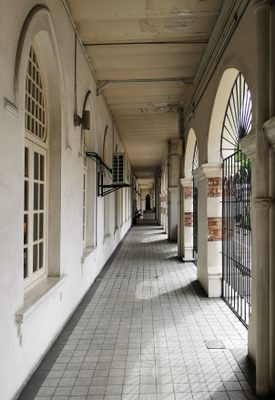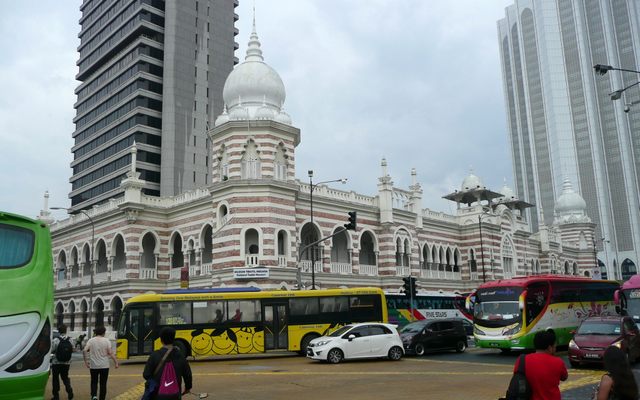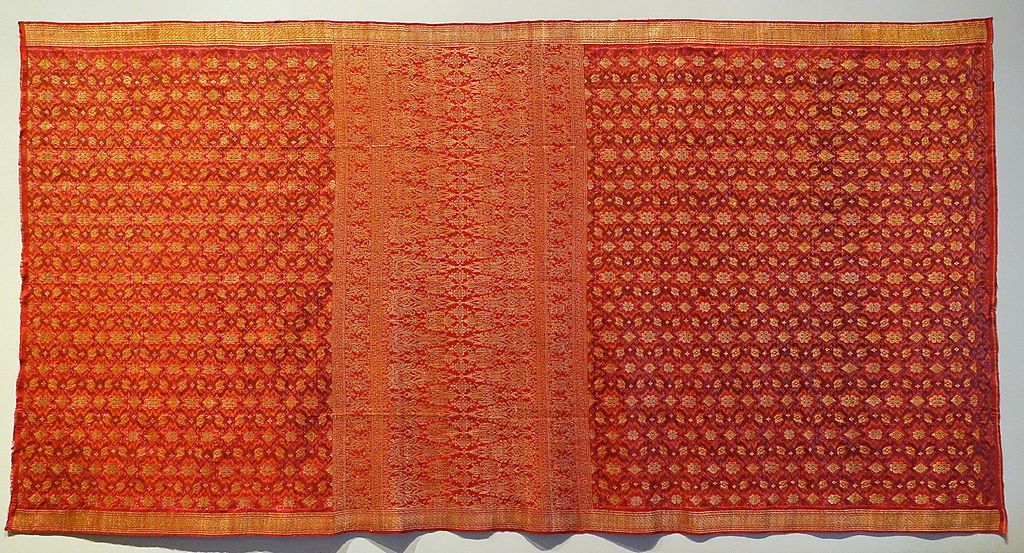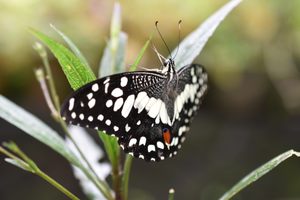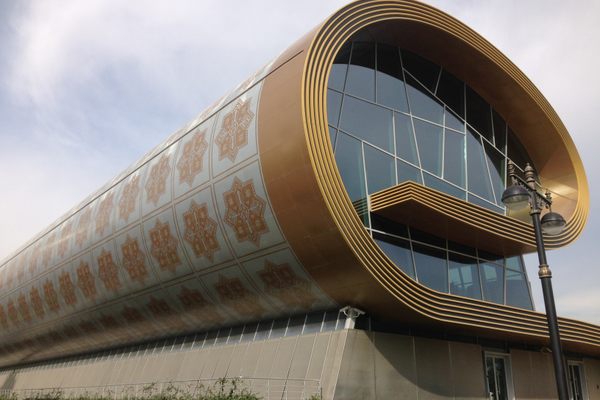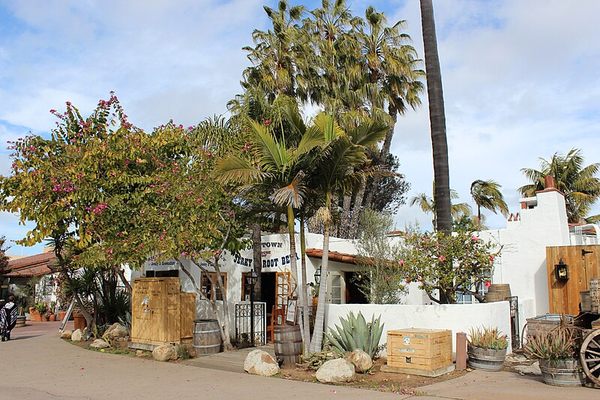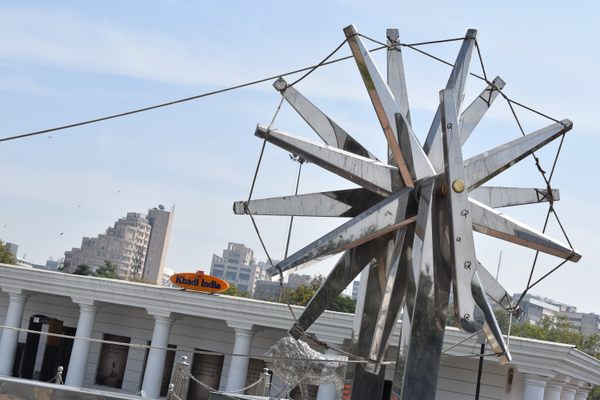About
Housed within a striking landmark building designed in the Indo-Saracenic Revival style, the National Textile Museum in Kuala Lumpur is dedicated to the very fabric of Malaysian culture.
Behind the pink-striped exterior of the former Federated Malay States Railways building, the museum is comprised of four galleries spread across two floors. They trace the history and significance of Malaysian textiles through the exhibition of traditional modes of dress, and by charting the evolution of textile-producing technology.
The Pohon Budi or “Tree of Life” gallery introduces visitors to the ancient origins of textile production and trade. This gallery spotlights prominent Malaysian textiles such as the songket (a silk sarong interwoven with gilded thread), keringkam (a kind of gold embroidery typically seen in headscarves worn by women in the Malaysian state of Sarawak), pua kumbu (a colorful, patterned cloth reserved for Iban ceremonies), and linangkit (a kind of decorative embroidery that adorns the skirts of Lotud women). The gallery also maps out the tools and techniques used to create these textiles.
The Pelangi Gallery is named after a multicolored cloth worn by various ethnic groups across Malaysia. This rainbow fabric is said to symbolize Malaysia’s colorful heritage, and showcases the ways in which different communities style and adorn this national textile.
The Teluk Berantai Gallery refers to the floral motif featured in Malaysian songkets. The pattern is associated with Malaysian unity, though different groups have cultivated their own aesthetic versions of it; from tekatan (embroidered gold on raised velvet) to kain limar (a silk panel draped over the songket).
Lastly, the Ratna Sari Gallery focuses on the exquisite finishing touches that complement Malaysian costumes: jewels and accessories made from gems, metals, and gold. The term Ratna Sari refers specifically to the traditional jewelry crafted by Malaysian artisans of yore, and which incorporates Chinese, Indian, and Malay details.
Related Tags
Know Before You Go
The National Textile Museum is open every day from 9 a.m. to 6 p.m. Admission is 5 Malaysian ringgits (about $1.20) for foreigners. The museum is about a 15-minute walk from the Masjid Jamek station in Kuala Lumpur.
Wild Borneo: Secrets of an Ancient Rainforest
Orangutans, fishing villages & untouched beauty in the Borneo Rainforest.
Book NowCommunity Contributors
Added By
Published
May 31, 2019

